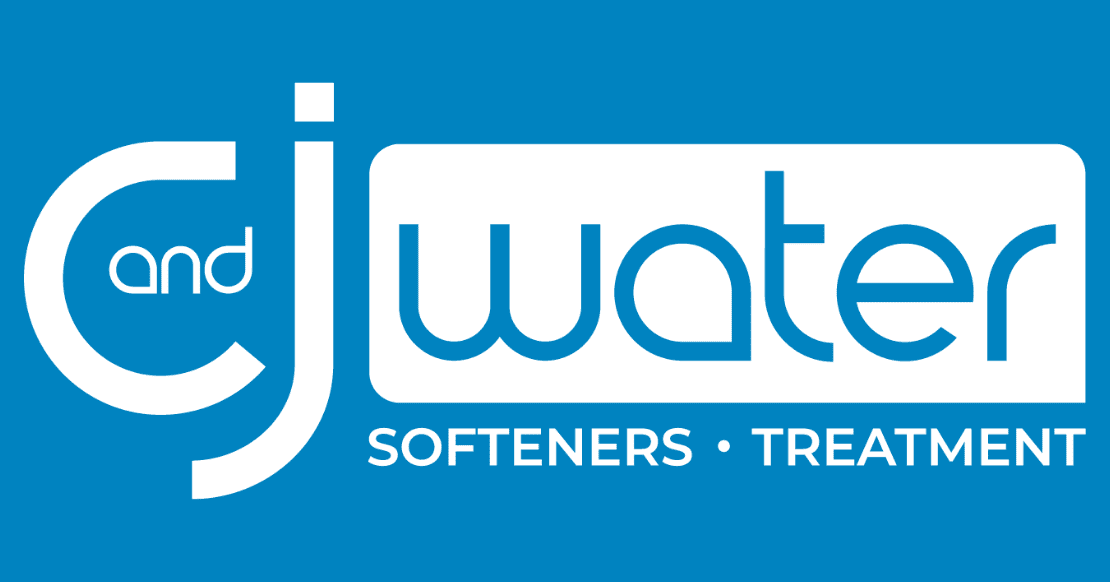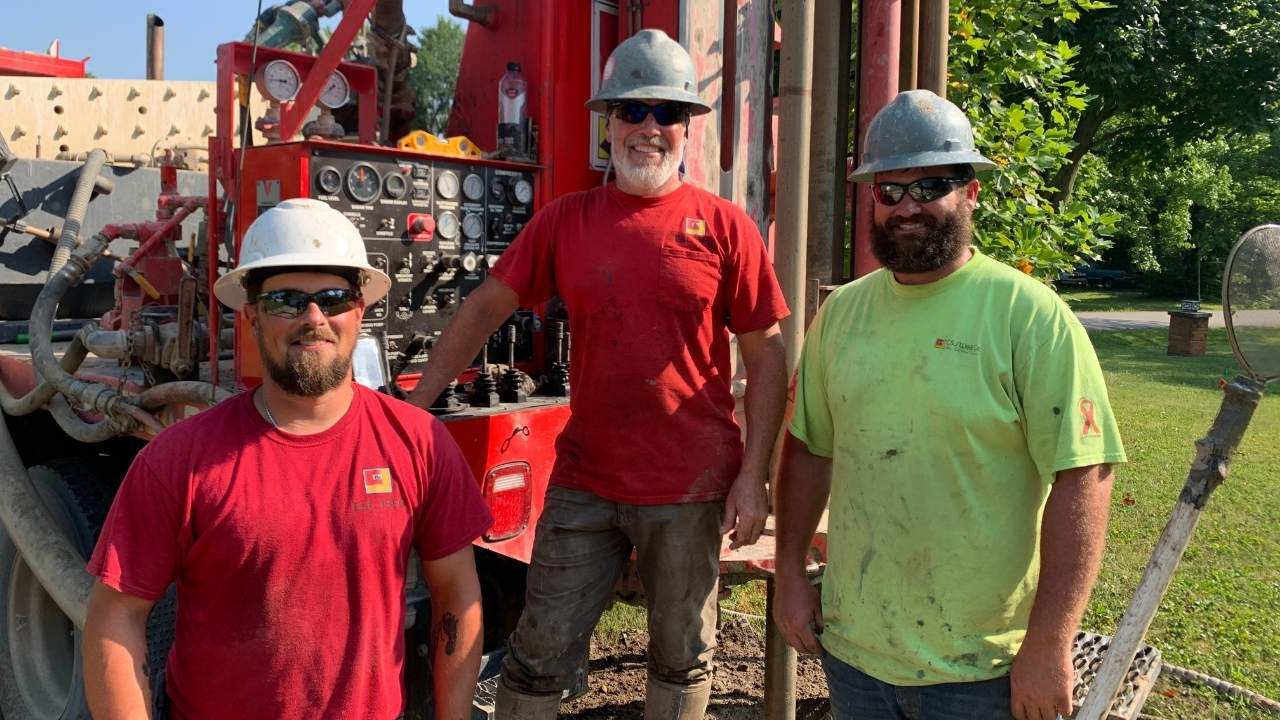What Well Drilling Equipment is Used?
In this industry, we understand that to accomplish your project efficiently, aside from using the most qualified personnel, we must also use modern, robust, and reliable drilling equipment. For this reason, C&J works with the newest and most diverse, state-of-the-art equipment for our drilling projects. Quality and customer satisfaction, for us, remain top priorities. At C&J Well Company, we use reliable, low-maintenance, and powerful Versadrill drilling rigs that consistently outperform the competition. Our water well drilling rigs easily maneuver in and out of job sites with these compact, all-wheel-drive rigs. Whether it’s a large commercial job or a small residential drilling project, our Versa-Drill rigs are built to meet your needs efficiently and economically. In this article, we will go over the basic parts and features that make our water well drilling equipment stand out in Central Indiana.
C&J Drill Rigs
The best drill rig is one that’s dependable, easy to use, and versatile. For this reason, C&J has multiple drill rigs for divergent applications. When we were founded 25 years ago we only had a 1966 Failing 1250 small mud rotary rig. As you can imagine, a lot has changed since then—we’ve owned over 10 Versa-Drill rigs throughout the years and our current fleet is made up of three Versa-Drill rotary rigs and one drill rig for bucket wells. Direct rotary drilling consists of cutting a borehole by means of a rotating string of drill rods and a bit against the formation. By circulating water-based drilling fluid, the drilled cuttings are carried to the surface. Air rotary drilling is often utilized in hard rock drilling. The air rotary equipment provides an estimation of the amount of water a well may produce. Mud rotary drilling equipment is often used in unconsolidated sediments. The drilling fluid stabilizes the formation, while drilling removes the cuttings from the bottom of the hole.
Versa-drill Geothermal & Water Well Rig Components

Engine & Transmission — Our rigs come with a Peterbilt 348 6×6 powered by PACCAR PX-9 diesel engine with 350 HP and automatic transmission. This makes our rigs reliable and versatile and gives them the power for almost any job.
Hydraulics — These rigs are equipped with a Durst pump drive box and Bosch Rexroth pumps & motors. All our models are equipped with a direct-drive hydraulic feed system. This makes the rigs both safer and more powerful than the competition since the power is not transferred through cable, chains, or over sheaves and sprockets. That also means no cables or chains to adjust and fail, which cuts back on downtime and expensive maintenance.
Leveling Jacks — Once the drilling rig is in place, the crew will make sure it is leveled using special feet attached to the rig. Leveling is important to ensure the well is drilled perfectly straight. The derrick is then raised and the first drill rod is set in place to begin drilling.
Drill Rods — The drill rods bore into the ground in 20-foot increments. They start by drilling through the overburden—the combination of dirt, clay, rock, and material that sits above the bedrock. Overburden can be a few feet deep, to a few hundred feet deep, so this part of the process takes time. Drill rods are added every 20 feet until the drill reaches a viable aquifer. It is somewhere within the bedrock that most groundwater is reached.
Throughout this process, you’ll see water and cutting discharge emerging from the hole that is being drilled. The water is actually water that is being poured directly into the hole to keep the drill rod lubricated and cooled as it drills. The discharge is the rock, clay, dirt, and other materials that are being removed from the hole. Because of the tremendous amount of air pressure being used to drill, the air pushes the water and debris out of the well hole.
Derrick — A derrick is basically a crane we extend when it’s time to drill. The derrick is about 40 feet high when extended and it holds and controls the drill rods. The derrick feeds the drill rods down the borehole as needed. Our rigs are capable of up to 25-40,000 lbs of pullback and 22,100 lbs of pulldown. Pullback is the amount of force required to recover the drill string from the hole. It requires more force when the drill is stuck to pull the drill string back up the borehole. Pulldown is the amount of force applied when drilling.

Drill Rod Mast Carousel — This system utilizes a carousel that is mounted onto the drill rig mast (or boom) so that the drill rods in the carousel are always in the same alignment as the rotation head. Our trucks are equipped with either a 10 or 15-rod carousel.
Drill Bits — At C&J we use several types of drill bits, depending on what we encounter underground. Diamond bits are designed with speed and durability to break through hard formations. Drag bits are designed for hard clays, pea gravels, and soft shale. Tricone bits are designed for hard rock formations and gravel. Our most common bits are two-cone bits. These are very versatile and able to drill through most formations found in Central Indiana.
Mud Manager — This is the pit with a shaker on it that shakes the cuttings and separates the cuttings from the water. The cuttings stay above ground while the water returns back to cool the drill rods and drill bit.
Mud Pump — This piece of equipment forces drill fluid down the drill rods and back out of the borehole.
Well Casing — The casing, much like the drill rods, is also installed in 20-foot increments. The casing serves an important role in the overall efficacy of your well. It is put in place to keep the overburden from seeping into your well and contaminating the water. Once the casing is installed, it will extend a few feet out of the ground. This ensures surface water and debris aren’t also entering the well from above.
Bucket Rig — Bucket drilling uses a cylindrical bucket with cutting blades or teeth mounted on a hinged bottom to repeatedly cut and lift sediments from the borehole. The process is repeated as necessary to achieve the proper borehole depth. A bucket well is often recommended in areas with very little water production from underground aquifers.
Water Trucks — The water truck carries the water needed for the drilling process, as well as tools and equipment that may be needed for the job.
All C&J Driller/Operators and Driller’s Assistants are highly trained drilling professionals with the training, experience, and skills required to perform work at any site. We have carried out drilling services for thousands of clients—farmers, homeowners, business owners, industry, utilities, and contractors—throughout Central Indiana who are satisfied with our impeccable services and have developed solid working relationships with us, based on excellent service delivery, trust, and integrity. Contact us today for more info or to start planning your water well drilling project!









